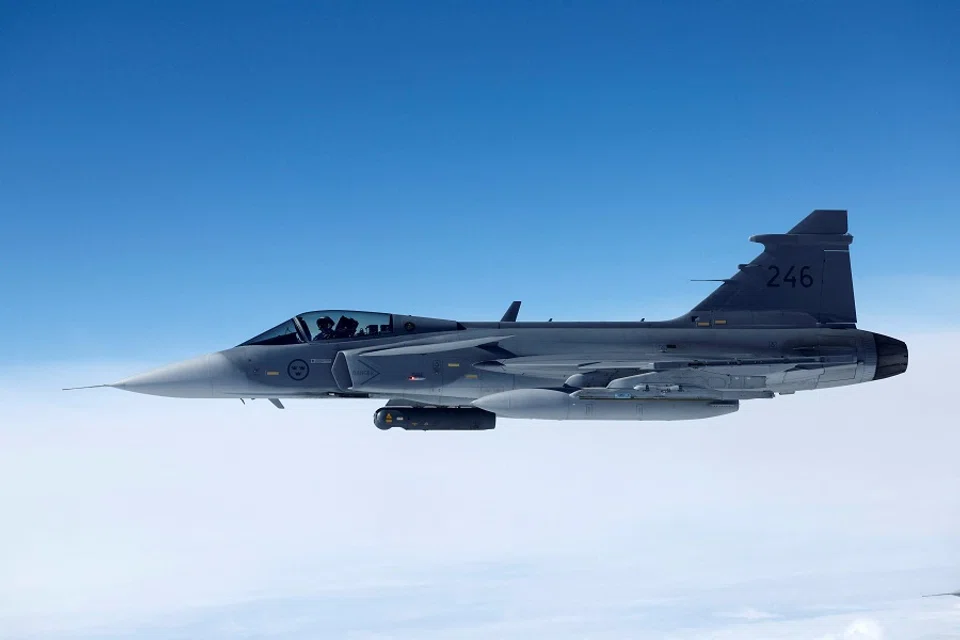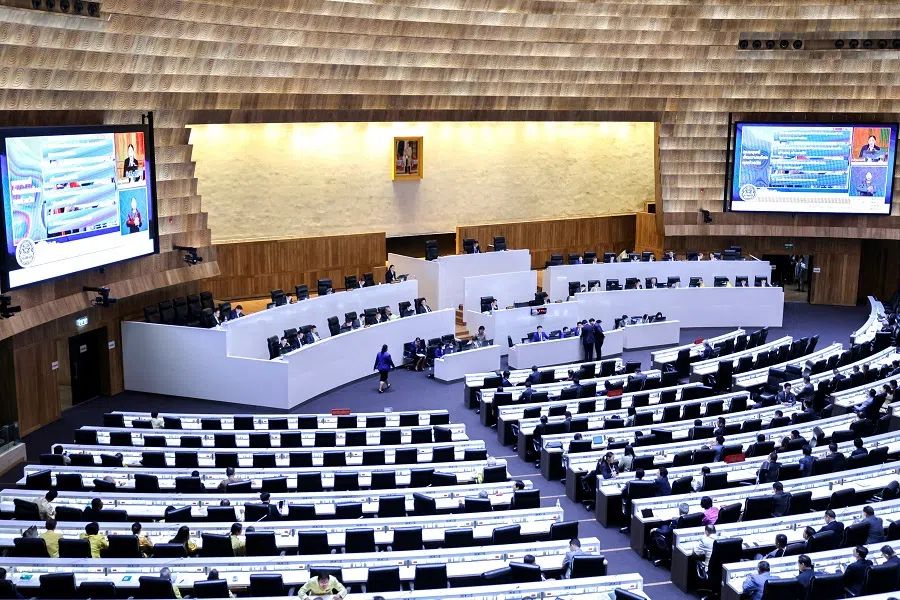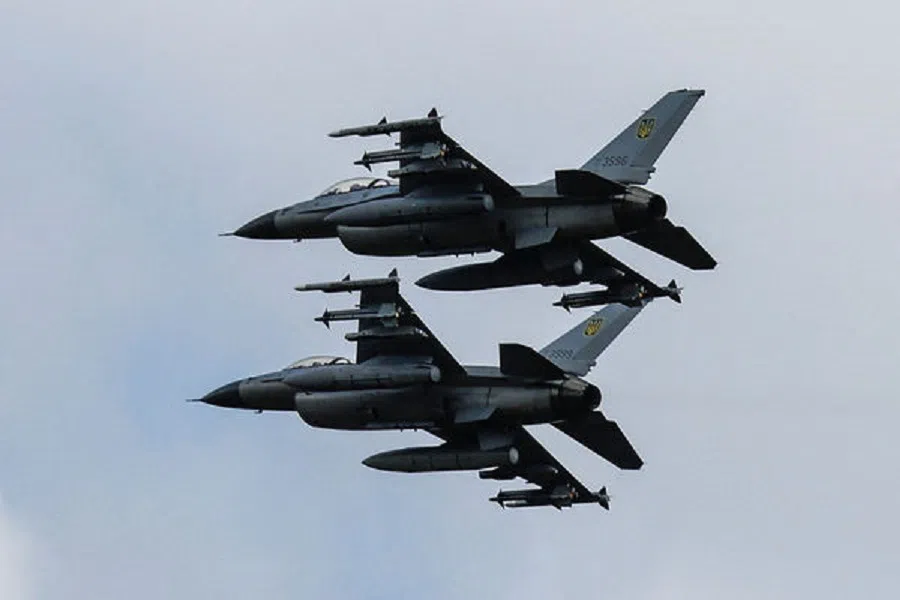Why Thailand chose Sweden’s Gripen fighter jet
The thinking behind the Royal Thai Air Force’s latest acquisitions reflects not just geopolitical considerations but also internal preferences of its senior ranks.

The history of the Royal Thai Air Force (RTAF)‘s combat aircraft procurement has long been a lens through which scholars comprehend Thailand’s efforts to keep up with regional competition and “bend with the wind” toward different great powers.
This began with Siam’s 1930 purchase of Avro 504s from Britain, 1933-1934 purchases of Vought O2U Corsairs/Curtiss P-36 Hawk fighters from the US, and Nakajima Ki-27, Tachikawa Ki-36 and Nakajima Ki-43 purchases from Japan during World War II.
In 1950, during the early Cold War, Thailand became closely aligned with and bought most of its military aircraft from the US, starting with Grumman F8F Bearcats, F-84 Thunderjets and T-33 Shooting Stars. In 1966-1967, during the Vietnam War, the US began supplying F-5A Freedom Fighters to Thailand.
The F-5s became the backbone of RTAF fighter aircraft, with the last batch coming in 1988. That year, Washington introduced Lockheed-Martin F-16s, which gradually replaced the F-5s. Ultimately, Thailand bought six batches of F-16s until 2004. All F-5s were meant to retire in 2010 while all F-16s were supposed to retire by 2039.
However, in 2024, the RTAF continues to use both. Reasons for this include bureaucratic inertia, insufficient funds to update its air technology, and the pilots’ abilities. In the early 2000s, the RTAF had sought a new generation of fighter aircraft.
Thailand’s military junta apparently favoured the Gripen because the RTAF needed new aircraft, Sweden’s and Thailand’s royal families were close, and “the Thai [military] is…close to its royal house”.
From the US to Russia to Sweden
Until 2005, the US dominated RTAF aircraft purchases but in that year, the ruling Thaksin Shinawatra government, seeking to reduce Thailand’s military dependency on the US while looking to save money, bargained with Russia to purchase 12 Sukhoi SU-30 fighter jets.

In contrast, then-RTAF Commander ACM Chalit Phukpasuk, like most senior RTAF officers and regal figures, preferred F-16s. A senior Thai military official told the author that most senior RTAF officers preferred the F-16 over the Gripen because this was the aircraft on which they had initially trained. However, the younger intermediate-level RTAF officers found the newer Gripen more appealing.
When a military coup overthrew Thaksin in 2006, the RTAF prepared to upgrade its F-16s. However, Washington, disappointed by the putsch, froze defence assistance to Thailand, including aid for F-16 improvements. Thereupon, the junta sought alternative aircraft sources but instead of swiveling to Russia, Thailand looked to Sweden’s SAAB JAS-39 Gripen jets.
The US refused to sell, fearing that, once in Thailand, the plane’s technology might be seen by Beijing. Also, the refusal could have been because the 2014-2019 Thai junta had tilted toward China.
Royal connections
Back in February 2005, Sweden’s king had visited Thailand with Swedish defence industry representatives. According to someone privy to the Thai-Swedish Gripen deal, Thailand’s military junta apparently favoured the Gripen because the RTAF needed new aircraft, Sweden’s and Thailand’s royal families were close, and “the Thai [military] is…close to its royal house”.
Indeed, Chalit suddenly changed his mind, becoming an eager supporter of Gripen jets for Thailand. By October 2007, Thailand had come to a US$1.1 billion agreement to buy six Gripen jets from Sweden. By 2012, Thailand purchased another six. Chalit’s pull on the Thai government’s turn toward Sweden was likely helped by his appointment to the King’s Privy Council in 2011.
Myanmar’s acquisition of new Russian SU-30’s and Chinese FTC-2000Gs compelled the RTAF to modernise its military hardware. In 2023, Thailand sought to buy 12 of the most advanced US fighter aircraft: the F-35s. The US refused to sell, fearing that, once in Thailand, the plane’s technology might be seen by Beijing. Also, the refusal could have been because the 2014-2019 Thai junta had tilted toward China. Instead, Washington suggested that Bangkok should purchase more F-16s.

In late 2023, the RTAF, seeking updated combat aircraft, chose between the newer F-16 Block-70/72 or the Gripen-E. Both options were equally pricy but included offset options (that is, additional compensatory agreements) to help sweeten each proposal. For the US, Thailand’s acceptance of the F-16 would help retain geopolitical balance against a rising China in Southeast Asia (even though Sweden is Washington’s NATO ally).
Eventually, the US’s Lockheed-Martin promised Link16 and loans to cover airplane costs. On its part, Swedish SAAB promised a licence to the datalink system Link-T, as well as technology transfer, personnel training to relevant agencies to develop knowledge to further develop the system, and the granting of Meteor air-to-air missiles. The UK supported Sweden in its bid to promote the Gripen, given that 25% of every Gripen is made by UK companies.
By choosing the Gripen, Thailand has succeeded in “hedging” because it has not bought new US, Russian or Chinese fighter aircraft.
Hedging strategy
The RTAF finally decided to select 12-14 Gripen E/F on 27 August 2024, to fulfil the needs of Thailand’s fighter aircraft procurement project (2025-2029). Deliveries would begin in 2028. At this time, the cabinet has not finalised its approval and no contract has been signed. However, Supalak Ganjanakhundee, advisor to Committee for Military Matters of Thailand’s Lower House told the author that Thai civilian governments rarely can veto military procurement decisions, though legislatures allocate the defence budget.
By choosing the Gripen, Thailand has succeeded in “hedging” because it has not bought new US, Russian or Chinese fighter aircraft. Following Thailand’s last two coups, the US withheld military aid, including the modernisation of F-16s. If there is a future coup, Washington might do the same.
Thailand still wants a more advanced aircraft from the US, such as the F-35. In the years ahead, the RTAF will continue looking for top quality combat aircraft to remain competitive among ASEAN air forces. Though the Thais will continue seeking to hedge the US against China in geopolitics, in the interests of its preferred air technology, Sweden and the US will likely remain the principal sources of procurement.
This article was first published in Fulcrum, ISEAS – Yusof Ishak Institute’s blogsite.





